Why do we wear Jewelry: Exploring the tradition
By Sharvari Deshpande / January 15, 2025 / No Comments / Ethnic
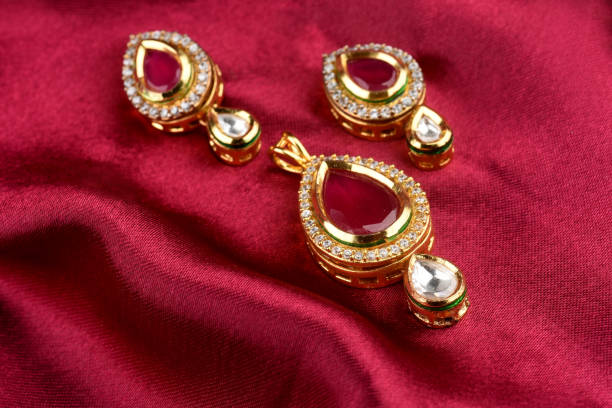
The practice of adorning ourselves with jewelry has traversed time and cultures, weaving a universal tradition that holds a tapestry of meanings. Beyond its visual appeal, jewelry embodies a spectrum of significance, ranging from cultural expressions to personal sentiments. Encompassing a range of styles, each with distinctive characteristics and known for its exquisite settings. We delve into the multifaced reasons behind our affinity, it’s enduring presence in human history and into our roots – India holds immense cultural and emotional value with ethnic jewelry from various regions. The allure of Indian jewelry lies in its remarkable artisanship, intricate detailing and stories it tells.
The Language of Jewelry : Expressing without words..
Jewelry, with it’s gleaming metals and sparkling gemstones, has a language all of it’s own – a silent, intricate form of expression that has been there all long, for centuries that transcends through cultures, time-periods and languages. It communicates beliefs, emotions, identities, symbolism, cultural significance that makes each piece unique.
Jewelry is a cultural code, a visual language that identifies individuals with their heritage. Delving into the rich hertiage of South Asian jewelery, the intricate gold designs. These pieces are cultural narratives that carry legacy of generations. They speak of community, tradition and belonging. In a world that’s is becoming increasingly interconnected – KRIA, brings to you unique pieces in a way for you to honor one’s roots and share them with others.
Historical Connotations of Wealth
In ancient civilizations, jewelry served as a visible marker for social heritage and affluence. Antique jewelry in India boasts a range of iconic designs from various regions of India that have withstood the test of time. Antique jewelery in India holds immense cultural and emotional value. These pieces and designs are treasured as heirlooms, representing heritage and family traditions. Antique jewlery in India traces it’s roots back to ancient civilizations, with influnces from the Indus Valley and Mughal eras. Why not try out the Mughal Legacy Jhumka Earrings, designed with a royal look in mind?
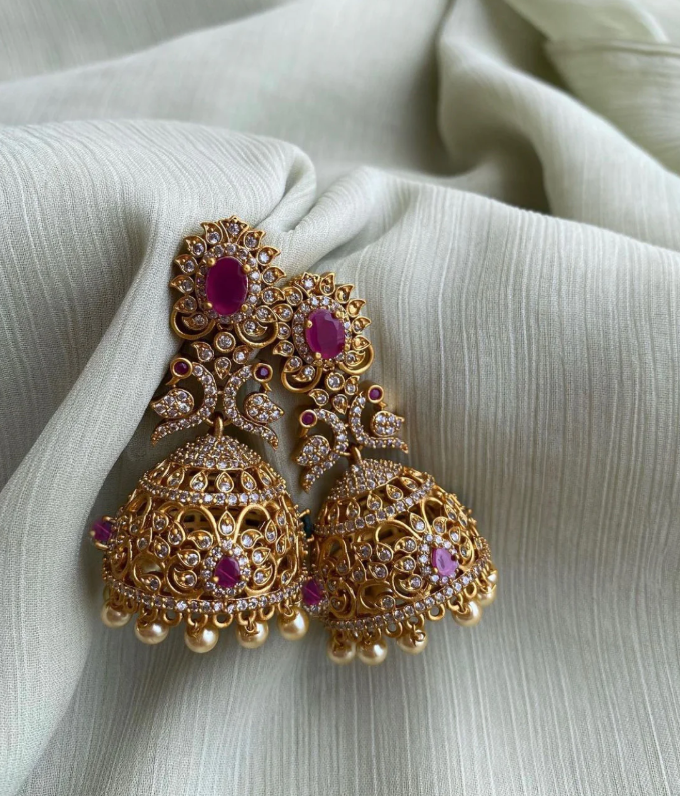
Kundan: Royal gemstone adornements
Kundan earrings are royal gemstone adornments known for their grandeur and opulence. These earrings feature gemstone settings that create a regal and antique look, making them perfect traditional Indian earrings for grand celebrations and special events. Kundan’s work is a proper form of art. Skilled artisans handcraft these earrings with precision and passion. The elaborate setting of gemstones in intricate designs gives Kundan earrings a timeless appeal.
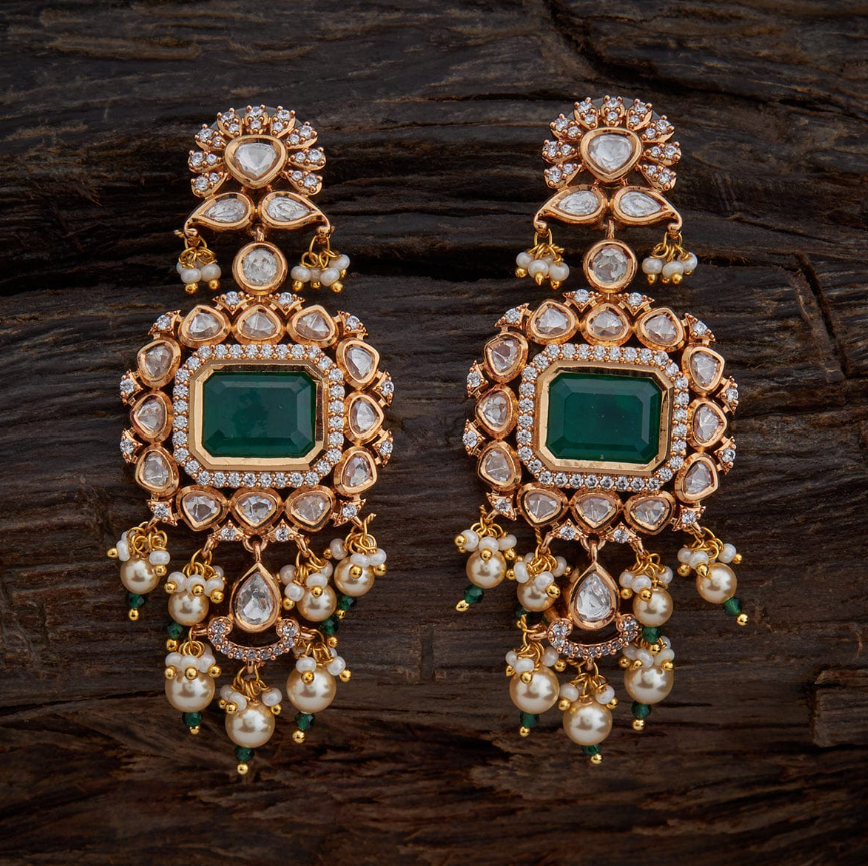
Royal gemstone adornements
Meenakari: Colours of Enamel Art
Meenakari earrings are a burst of colours and artistry. These vibrant pieces consist of enamel work that adds a splash of lively hues to your ensemble. They’re like wearable works of art that bring joy and radiance. Meenakari earrings are known for their intricate enamel work. The use of vibrant colours and detailed patterns makes them stand out. The combination of metal and enamel creates a unique contrast that’s visually appealing
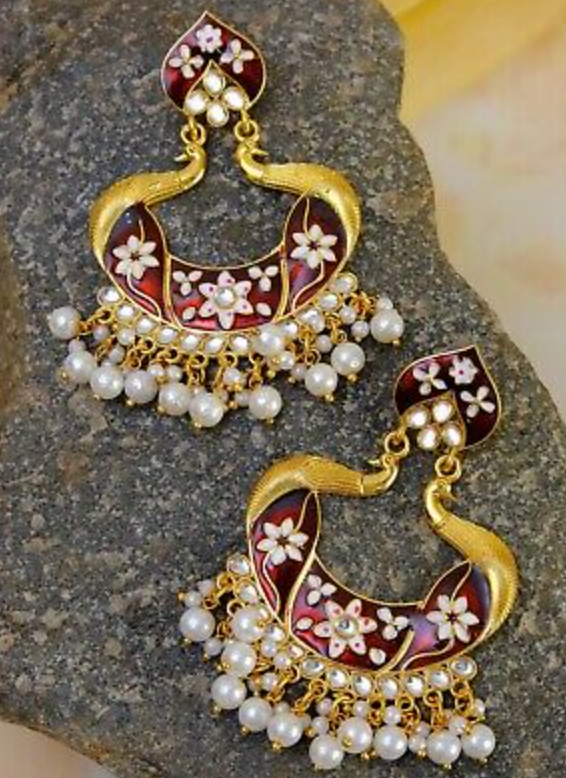
Chandbali: Crescent Moon Charms
Chandbali earrings are like crescent moon charms that add a regal touch to types of earrings in India. Their unique crescent shape sets them apart, making them perfect for grand events.
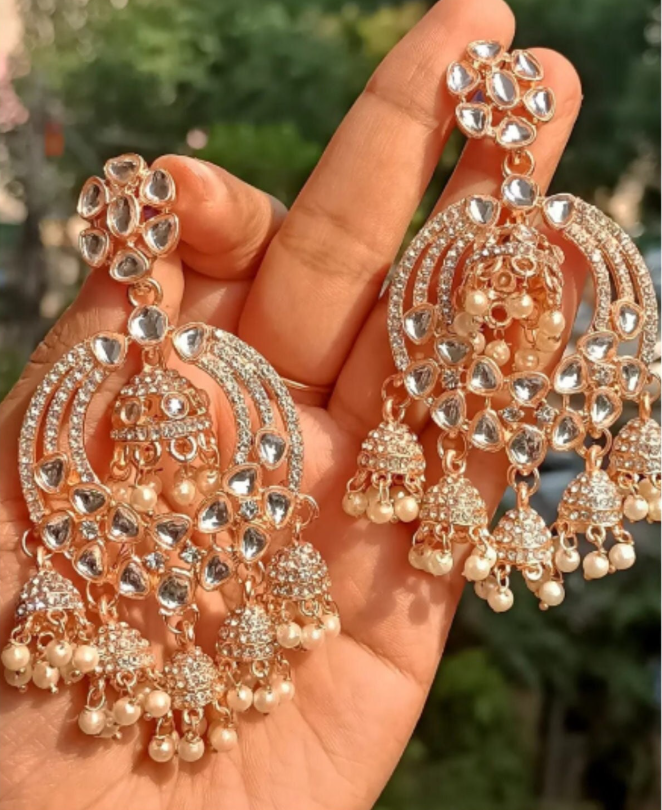
Symbols used in Indian Jewelry: Temple Jewelry
India’s rich culture is abundant in icons and symbols, the same can be said for jewelry. Apart from being a status symbol, traditional Indian jewelry is also worn as a supplement to religion and spirituality. Images of Gods and animals can bem often found on jewelry as they often symbolize different things and appease deities. The elephant is one of the most revered animals in India. It is also a symbol of Lord Ganesha, the remover of obstacles and the God of new beginnings.
Peacocks are also a common symbol in Peacocks are also common in Indian jewelry. Their majestic appearance and beautiful colors often make very attractive pieces of jewelry and a must have in your jewelry cabinet. Have you tried our ‘Vintage Dangle Peacock Feather’. Peacocks are also portrayed as vehicles for many deities in Hindu mythology.
The goddess of wealth and prosperity, Lakshmi, is mostly associated with peacock. Which brings us to Temple earrings. The grandeaur of South Indian temple architecture inspires temple earrings. Try our ‘Divine intervention Temple earrings’ & our ‘Vintage Dangle Peacock Feather’.
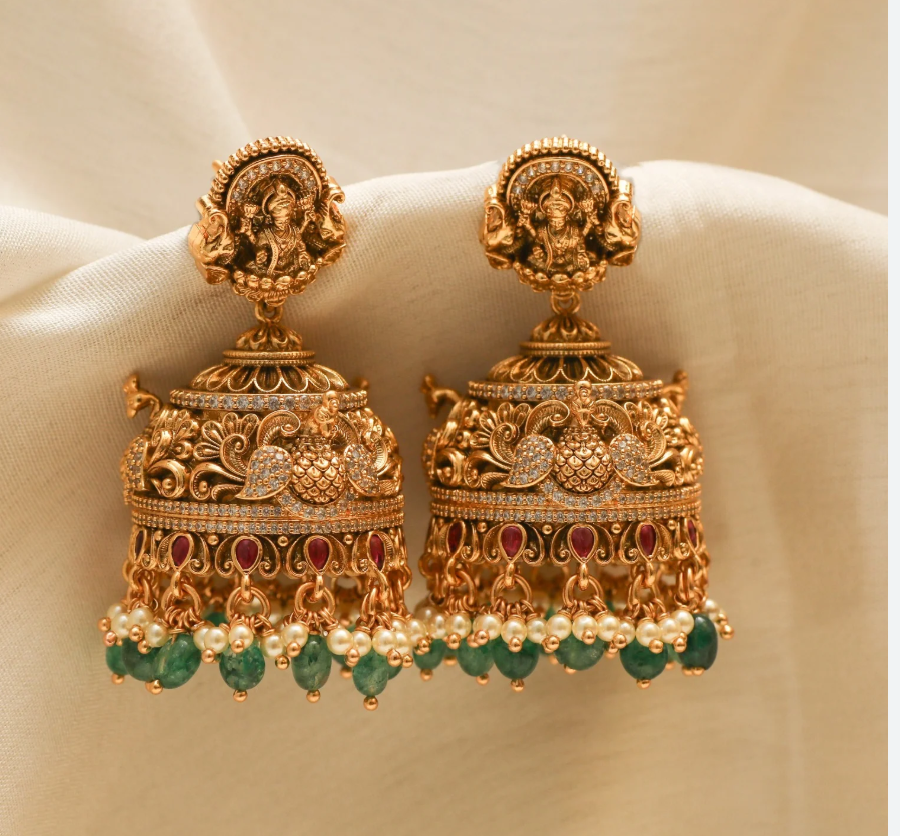
Nath or nose ring:
Brides wear a nath or nose ring on the left side of her nose. It is another symbol of married life in Hindu culture and can be as simple as a stud or nose pin. Another version is more detailed with ornate stone settings and a chain that drapes along the cheek. Try our “Maharastrian Nath”

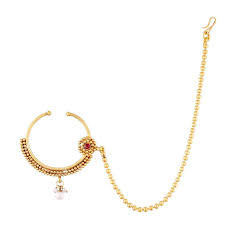
Blend of heritage and modern era
As the world becomes more interconnected and diverse, the future of status and jewellery is likely to embrace a blend of tradition and modernity. KRIA also has a range of earrings to suit Your day to day acitivities and for your little ones!
In conclusion, jewellery has played a significant role in signifying status throughout history.
